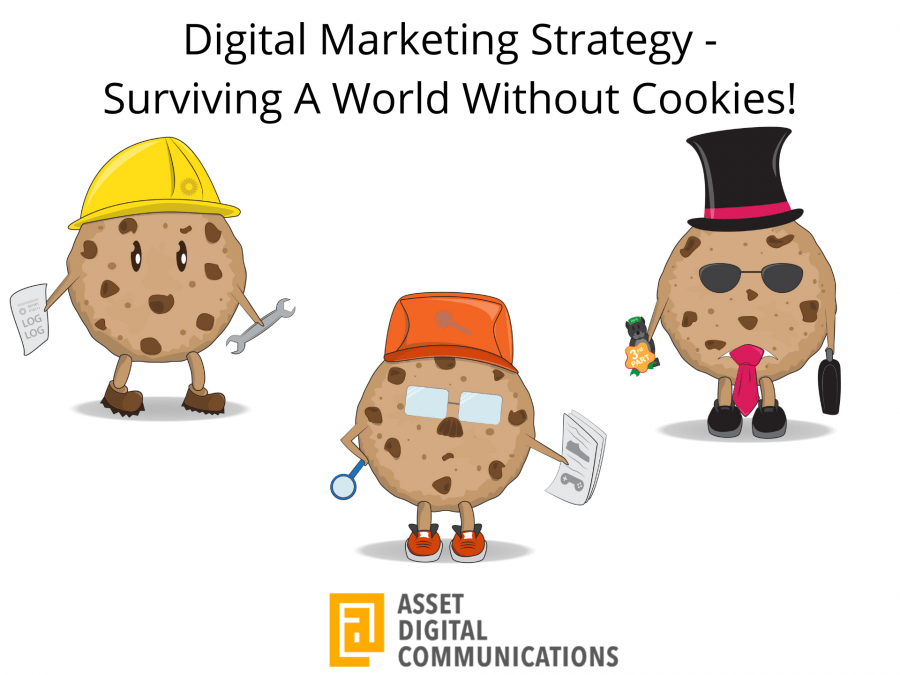Digital Marketing Strategy – Surviving in a World Without Cookies!
Third-party Cookies finally seem to be crumbling to extinction. With Mozilla’s Firefox and Apple’s Safari already blocking Third-Party Cookies, the big blow to advertisers and publishers comes from Google’s Chrome browser who has also decided to no longer host Third-Party Cookies. Google has also confirmed that it will not launch the alternative user-level ad identifiers which were going to replace Third-Party Cookies.
Let us understand what Cookies really are.
A Cookie is a small snippet of code that gets added to your device when you visit a website. These Cookies track your interactions like login and browsing history. This data is then used in advertising as they help in behavioral profiling and ad retargeting.
There are 2 types of Cookies –
First-Party Cookies – This type of Cookie is created by the website you visit. It is used to understand the behaviour of the user and create a better experience for him. They record data like usernames, shopping cart info, preferred language.
Third-Party Cookies – This type of Cookie is used to identify users across several websites. The data generated from these Cookies get shared with multiple websites except the one you are visiting. Third-Party Cookie builds a visitor’s profile through purchase behaviour and interests. This data is then used in tracking and online advertising.
Why is a Cookie-less World Better?
The common knowledge around Cookies is that businesses used them to create a personalized ad experience for their customers. What most people do not know is that Third-Party Cookies were messy to start with. For Cookies to be effective they needed to be matched to its owner first, which is close to impossible in most cases. As a result, syncing the right Cookies was difficult. This caused irrelevant ads being shown to users, leaving them annoyed with having to deal with pushy marketing strategies.
Additionally, a study conducted by Flashtalking back in 2017 showed that 64% of tracking cookies are either deleted or blocked by web browsers. Thus, making businesses lose money on missed advertising opportunities.
The big question that you may have is how does this affect your marketing efforts? What does this mean for you? Does this mean new advertising strategies? How to track user data for your ads?
The simplest way we can explain this is that it is time for removal of Third-Party data and instead, concentrate on building relationships with your existing customers. This move to eliminate Third Party data has been made to increase privacy for consumers.
How Digital Advertising Industry Can Work Without Cookies
1. Contextual Advertising
Contextual advertising means advertisements that match the rest of the content on the web page. Unlike Third-Party Cookies, contextual ads do not target your behaviour profile but instead show you ads based on the content you are looking at.
Contextual advertising works because they do not feel creepy like someone is watching you on the web. It lets you create personalized content leading to quality leads.
2. Invest In Building Direct Customer Relationships
It is essential to build strong relationships with your customers in a post-Cookie world. In these privacy-first times, it is vital to get your customer’s consent to send any kind of communication to them. This includes text messages, emails, or promotional offers.
As a business, you can start to collect opted-in data from your existing as well as new customers. Offering different incentives really boosts data-capturing mechanisms. For example, you can ask for their emails or phone number in exchange for discounts, deals, credits, or exclusive products or content. The idea is to offer your target audience something they value.
3. Improve Analytics Capability
A cross-platform analytics tool can really help a business analyze all the gathered data and make sense of it in one place.
For example, Google 360 is an analytics solution that can examine all the First-Party data on your website. You can then combine it with your ad platform tools. The data you collect from your customers will show you purchasing patterns or seasonal demand. Thus, enabling you to identify the right time to promote different content, offers, and products or services.
4. Using A CRM To Better Understand Your Audience
A Customer Relationship Management tool can really show you the big picture by combining your ads, data, and analytics. Furthermore, a cloud-based platform makes it even more secure for data.
More and more businesses are switching to cloud solutions, as it is faster and can provide customer analysis through machine learning. Thus, it helps to understand data better and make more informed decisions. Machine Learning also unlocks deeper insights like predicting purchase behaviour and customer lifetime value.
Striking the Right Balance
The future of marketing lies in offering transparency, choice, and value to the customers. Businesses need to focus on more relevant and less invasive ad experiences.
The trick is to strike the right balance between personalization and privacy. While customers today think personalization is a standard service, they also want to be able to choose between seeing and ignoring ads and to get a personalized experience or not.
The customer will always remain central and its time to respect their privacy.



